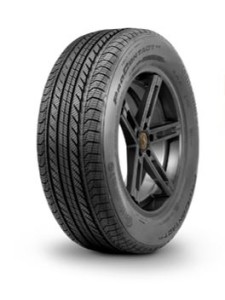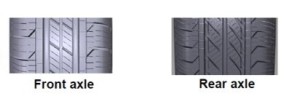Johnny Acree
Elio Addict
- Joined
- May 12, 2014
- Messages
- 1,530
- Reaction score
- 2,573
Safety Comes First
April 19, 2019
Happy Friday Elio’ers! Before we get to the blog from the archives, we wanted to touch on a recent topic. As some of you may have seen, an article was recently published that mentioned a meeting between Elio Motors and Governor DeWine in Ohio. We want to clear the air- we still plan to build the Elio in Shreveport, Louisiana.
Original date Sept 13 2017
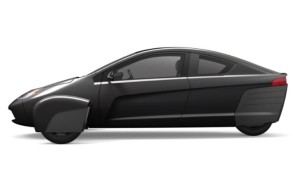
We’re all familiar with the phrase “Safety First.” For many of us, this adage was introduced early on in childhood and is largely abandoned once we reach adulthood. At Elio Motors, safety first is not just sage advice; it’s one of the four “musts” of the project. The other three “musts” (fuel efficiency, affordability, American-made) are deeply ingrained into our company DNA, but the safety of the vehicle is of utmost importance. To make sure our vehicle is as safe as possible, we have and will continue to conduct a battery of tests. When you think of safety testing, you likely think of a vehicle with crash test dummy occupants hurling into a wall. There are, however, a wide range of safety tests conducted. Today we will look at roof crush resistance testing.
Just as the Elio is unique, so too is its classification. While the Elio will be classified either as an autocycle or a motorcycle, we will be focusing on automotive safety standards as a part of our safety-first approach.
The safety test we will review today is formally known as FMVSS 216a – Federal Motor Vehicle Safety Standards; Roof Crush Resistance. The definition is as follows:
“To reduce injuries and fatalities in passenger cars, pickup trucks, vans and multipurpose passenger vehicles resulting from roof intrusion during rollover crashes. This requirement establishes roof strength requirements for the safety of the occupant.”
To date, our simulated testing has passed the established FMVSS standard and we currently have 4 vehicles targeted for further testing. This testing will be conducted where the roof, windshield, and A-pillar intersect.
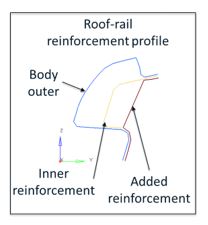
There are two main factors that allow the Elio to meet the FMVSS standard. First, the A-Pillar is designed for maximum strength. Additionally, even though the vehicle is light weight, our unibody construction adds protection to the roof of the vehicle.
An additional part of the testing, FMVSS216a – Barrier Displacement, is defined as:
“Test requires sequential LH (Left Hand), then RH (Right Hand) rigid platens to load the roof rail structure to 3x vehicle weight. Vehicle structure must achieve 3g condition before 127mm of displacement on either roof frame and must not load a 50th percentile male occupant head in either front seat of the vehicle more than 222N if contact with head form is unavoidable.”
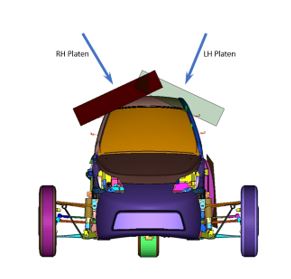
Again, based on the strength of the A-Pillar and the unibody construction, the Elio will meet this safety standard.
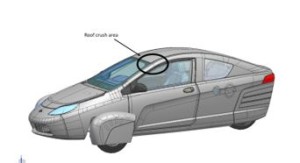
The Elio may not be the largest vehicle on the road, but it will be held to the same safety standards. Fuel-efficiency, a low base price and American-made are all crucial to the Elio project, but safety always comes first.


